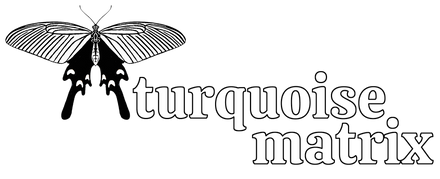Arizona Mine Information
Bisbee
Bisbee is a large copper mine located near Bisbee, Arizona owned by Phelps Dodge Mining Company. In the late 1950's, a deposit of turquoise was found in the Lavender Pit region of the Bisbee Mine. Most of this turquoise was hauled off to an area where they dumped their waste and over burdens from the mining project. In 1972, the one and only lease ever given to work the dumps from the Lavendar Pitt was awarded to Mr. Robert Matthews of Durango, Colorado. Bob and his associates worked the dumps hard for approximately two years to recover less than 2,000 pounds of good to excellent quality Bisbee turquoise. Due to mining restrictions and the cost of recovering the Bisbee turquoise from the dumps, mining slowed down and ended by 1980. Only small amounts of Bisbee turquoise have surfaced since and this has been from mine ‘robbers’ that sneak into the guarded mine late at night to hunt for turquoise in the dumps.
Ithaca Peak
Ithaca Peak turquoise comes from the Cerbat Mountains in Mohave County. It is part of the Mineral Park mining district and was at one time one of the two main turquoise deposits along with Turquoise Mountain. This claim produced all grades of turquoise, yet, had a high amount of high grade gem turquoise that came out. Ithaca peak turquoise, like Kingman, is typically a beautiful sky blue color but is specifically known for heavier pyrite inclusions. While pyrite is also found in other types of turquoise, it will usually be more of a brassy color in the Ithaca Peak material, which can be helpful in differentiating it from similar stones like Morenci turquoise. Ithaca Peak turquoise is also famous for its deep midnight blue colored gems. The material can go from a "Robin's Egg" blue all the way to a Lapis blue. Looks that are collectible include gems with high percentage of pyrite, black spider web gems, gems with deep blue with pyrite and quartz matrix. The majority of Ithaca Peak turquoise in the market has been stabilized. Natural webbed Ithaca Peak turquoise is considered highly collectible if you can find it.
Kingman
The Kingman turquoise Mine is one of the oldest and highest producing turquoise Mines in America. It was originally discovered by indigenous people well over 1000 years ago. Kingman turquoise is known for its beautiful sky blue color and produces many variations of blue turquoise. The Kingman turquoise mine also produces green turquoise from the turquoise Mountain side of the mine. Kingman turquoise has been the biggest supplier of turquoise to the Southwestern Turquoise Jewelry industry for nearly as long as the American turquoise Jewelry industry has existed. In fact, the Kingman turquoise mine was once part of a turquoise boom around 1000 AD when the Mayan culture was using a lot of turquoise for self adornments and ceremonial items. Today, as in the old times, blue turquoise from Kingman, Arizona is king, even though the mine produces all colors of turquoise and green turquoise is almost becoming blue turquoise's equal in popularity these days. The Mineral Park Mine,(Kingman turquoise Mine,) is located in the Acerbate Mountains 14 miles northwest of Kingman, Arizona. It has been commercially mined since the late 1880's to the early 1900's by the Aztec Turquoise Co, The Los Angeles Gem Co, Arizona Turquoise Co, Southwest Turquoise Co and Mineral Park Turquoise Co and now the Colbaugh Processing Inc.
Morenci
Located in Greenlee County in southeastern Arizona, Morenci turquoise is a byproduct of the Morenci copper mine.. From 1956 to 1984 the turquoise rights were granted to William "Lucky" Brown who had an extensive mining career that included working the mine at Villa Grove in Colorado. The Morenci mine produced high quantities and was marketed through family operated trading posts in New Mexico and Arizona. Lucky retired in 1982 and his sons continued to mine the Turquoise until the lease ended. This mine was a major producer of natural gemstones that were used commercially for years in predominantly Southwestern and Native American Jewelry. For many years heavy-equipment operators at the mine would "lunch box" the high-grade Turquoise out. The March 1977 edition of the “International Turquoise Annual” states, "Many years ago, while mining for copper, workers unearthed a large zone of Turquoise-bearing rock and, realizing its value, began working this zone, neglecting the copper. In order to ensure copper production continued, the copper company that held the mine at the time took the entire turquoise deposit, which was extensive, and buried it under thousands of tons of waste rock from the pit and it is still sitting there.” This mine has been closed for dozens of years and thus, Morenci turquoise is considered incredibly rare.
Turquoise Mountain
The Turquoise Mountain area was originally discovered and developed by Native Americans for thousands of years. The Mineral Park Mining district is located in the Acerbate Mountains 14 miles northwest of Kingman, Arizona. It has been commercially mined since the late 1880's to the early 1900's by the Aztec Turquoise Co, The Los Angeles Gem Co, Arizona Turquoise Co, Southwest Turquoise Co and Mineral Park Turquoise Co and now the Colbaugh Processing Inc. Chuck Colbaugh had the turquoise mining contract for Ithaca Peak and Turquoise Mountain since the early 1960's and the concession is still in the family today run by Marty and son Josh Colbaugh. The Turquoise Mountain mine is located adjacent to the Kingman and Ithaca Peak mine. The natural material that I’ve acquired over the years comes in a lighter tone of green and blue with light golden and sometimes red brown matrix. The majority was mined in the 1980’s. The stabilized material from Turquoise Mountain reflects a very deep saturated blue with telltale red/brown matrix. My collection started with material from the Turquoise Mountain mine via Josh Colbaugh. I was stuck ever since.

